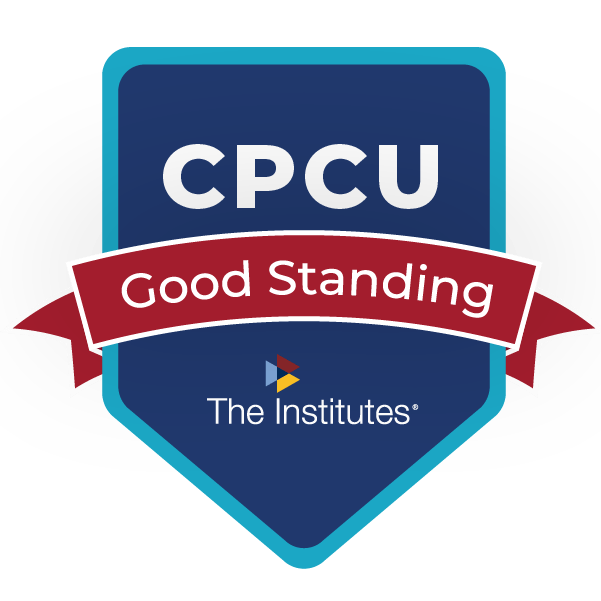Just Posted: Structured Installment Sales Case Study on Our YouTube Channel
August 18, 2023 – For those seeking to defer, reduce, or in some rare instances, completely eliminate capital gains taxes on the sale of a business, real estate, or other qualifying appreciated asset, perhaps no method of tax deferral holds more promise than a Structured Installment Sale (SIS). They’re easy to implement, straightforward, and, when implemented properly, fully compliant with Section 453 of the Internal Revenue Code.
In our latest YouTube Channel offering, we offer a Structured Installment Sale Case Study No. 3 as a helpful peek inside the analysis one might go through to determine whether or not a SIS is right for them. In this episode we go through the analysis to compare and contrast a hypothetical cash sale of a business for $2,000,000 to a SIS for the same amount of money.
The net result? a SIS saves the client over $200,000 in capital gains taxes!
The video is only seven minutes long and makes a compelling case for anyone selling their business. For those reluctant to sell because of the tax hit they anticipate, a Structured Installment Sale can help ameliorate that worry by letting sellers keep more of their sales proceeds for themselves instead of sending them off unnecessarily to the federal and state government.
Structured Installment Sales. Be sure to check out our other publications and videos on this money-saving topic.
Posted: August 18, 2023 | Category: Articles, Blog, Structured Sales | Comments Off on Just Posted: Structured Installment Sales Case Study on Our YouTube Channel
Structured Installment Sales for Tax Efficiency
July 12, 2021 – Since my article in Realty Times on structured installment sales last year, housing appreciation has continued unabated and interest by many in “cashing in by cashing out” of their paper wealth has increased.
With some talk of interest rates ticking up in the coming year and phase four of the real estate cycle, recession, overdue, this seems an ideal time to take advantage of market demand by selling appreciated real estate.
But then there’s the tax sting which keeps many from selling.
Because capital gains on assets held over two years on anything above $250,000 (single) or $500,000 (married filing jointly) for a primary residence can be taxed at 0%, 15%, or 20% depending on the amount of gain, strategically selling real estate to minimize these taxes is just plain smart.
Add in state capital gains taxes which can siphon away even more of your equity when selling and you have a lot of reasons for considering a structured installment sale when you sell.
The Four Phases of the Real Estate Cycle
The four generally accepted phases of a real estate cycle are recovery, expansion, hyper supply, and recession. Depending on who you want to believe, these real estate cycles can last anywhere from 7-to-10 years to as many as 18 years.
We’re not here to argue which phase we’re in right now and can’t predict with any degree of accuracy when things will change, and supply starts to outstrip demand.
We just know that when someone’s ready to sell and wants to defer, reduce, or eliminate capital gains taxes, we can help.
Our firm fields calls from interested parties from across the country nearly every week and we’ve helped many clients save money on their transactions.
Structured installment sales are supported by U.S. tax law and are surprisingly easy to implement.
Our challenge is not enough people have heard about this option yet despite its availability for decades.
Having helped clients save tens of thousands of dollars on capital gains taxes, we’re urging anyone contemplating selling a business or real estate to look into the benefits of doing so using a structured installment sale.
Photo by Tierra Mallorca on Unsplash
Posted: July 12, 2021 | Category: Articles, Blog, Structured Sales | Tags: structured installment sales | Comments Off on Structured Installment Sales for Tax Efficiency
Coronavirus Auto Injury Data
May 8, 2020 – Remember that credit you received on your auto insurance bill last month due to the anticipated lower claims costs since fewer people would be on the road during the coronavirus pandemic shelter-in-place orders?
Don’t be surprised if that ends rather quickly.
According to a recent article in Digital Insurance, a periodical aimed at senior insurance executives, those assumptions may have been faulty. (“Data may imply coronavirus auto-premium reductions were premature.”)

While there are certainly fewer vehicles on the road, it turns out many are traveling faster and perhaps feeling overly secure and paying less attention because of the low traffic, leading to more speeding tickets being issued and a higher fatality rate when crashes occur.
This can be especially problematic where 18-wheelers are involved. Speed + Mass + Collision usually = Very Bad Outcome.
This tracks with some of the conversations I’ve had recently with claims personnel and plaintiff attorneys. Overall, it’s too soon to know how all this will play out but all signs point toward the possibility of lower claims counts with higher severity until traffic patterns return to normal.
Until then, a timely reminder to be extra vigilant when driving during this pandemic.
Photo by Michael Jin on Unsplash
Posted: May 8, 2020 | Category: Articles, Blog, Structured Settlements | Comments Off on Coronavirus Auto Injury Data
Recognizing a Noble Profession
This Week We’re Celebrating:

What’s that you say? Didn’t know such a holiday existed?
Don’t feel too bad. According to Google (and every other source I could think to consult), it doesn’t.
That’s why I invented it in 2013.
Full Disclosure: I’m from a family of insurance professionals. Add up the claims service of my dad, brother, wife, step-daughter, a couple family godparents and myself, we have dedicated more than 150 years to the insurance industry.
 Even if Hallmark never designs a new card to honor the occasion and I’m the only one who ever celebrates it, I plan to set aside this week for the remainder of my career to pay homage to the fine men and women who toil in the claims departments of America each and every day of the year.
Even if Hallmark never designs a new card to honor the occasion and I’m the only one who ever celebrates it, I plan to set aside this week for the remainder of my career to pay homage to the fine men and women who toil in the claims departments of America each and every day of the year.
And I’m making it a week because it deserves to be more than a measly day given all they have to deal with throughout the year. I know. I’ve been there.
Why do this? A couple of reasons:
They Make The World Go ‘Round
Take a moment to think about all the people, in addition to those for whom insurance coverage is provided, whose lives are enriched because of the work claims representatives perform:
- Contractors who repair physical damage,
- Doctors who treat those with physical injuries,
- Attorneys who represent clients involved in the settlement process,
- Shareholders, Mediators, Car Dealers, Manufacturers,
- Consultants, and Vendors of every stripe imaginable.
It’s impossible to quantify exactly how much economic activity is generated simply because claims professionals do their job. Suffice it to say that it’s probably . . . “a lot!“
The Job Requires Skill In Multiple Disciplines
A claims professional is the quintessential “Jack of All Trades.” At various times, they wear multiple hats which can make it hard to differentiate them from numerous other professionals such as:
Banker – Counselor – Pastor – Lawyer – Appraiser – Mathematician – Researcher – Investigator – Mediator – Politician – Time Management Specialist – Physicist -Philosopher – Educator – Statistician – Communications Expert – Interpreter – Etc.
 Claims departments frequently draw from a talent pool which contains people from a wide variety of interests and college majors which results in a broad background of experience.
Claims departments frequently draw from a talent pool which contains people from a wide variety of interests and college majors which results in a broad background of experience.
In fact, many smart plaintiff law firms and other businesses often hire ex-claims professionals because they value their skills and training so highly.
It’s a Noble Profession That Helps People
Claims professionals serve as the conduit between a suffered loss and recovery.
Unfortunately, money is the only medium available that can help restore an individual to their pre-accident condition following a covered loss. And quantifying intangible damages is an impossible task at best. Consider:
- What value can you really ever put on the life of a child who’s been killed?
- How can money replace the memories of a home destroyed by fire?
These are among the many challenges claims professionals confront each and every day. And they do so in spite of the fact that they often garner about as much respect as an offensive right guard on a football team for their efforts.
Theirs is NOT an easy job by any stretch of the imagination.
But ask any person who’s ever been aided by a Catastrophe Duty Claims Professional how appreciative they were when the insurance representative showed up, check in hand, to help appraise and pay for their loss.
Ask anyone’s who has ever accepted a structured settlement when settling a physical injury claim how glad they were to receive guaranteed future income that is 100% income tax-free.
There are countless other examples of appreciation people feel each and every day for claims service even if it’s very rarely expressed as often as it should be.
 So here’s to you, Claims Professionals. This week we pause to salute you by saying simply
So here’s to you, Claims Professionals. This week we pause to salute you by saying simply
“Thank You!”
for doing what you do.
We hope you are as proud of your contribution to society as we are of the the service you provide that helps so many.
Best wishes to all of you for continued success in your careers and your life!
Posted: January 29, 2020 | Category: Articles, Blog, Newsletter, Structured Settlements | Comments Off on Recognizing a Noble Profession
Structured Settlements: Medicare Secondary Payer Act
Eighth in a series of blog posts dedicated to helping clients decide when a structured settlement should be considered.

Today’s Installment: Medicare Secondary Payer Act
August 13, 2019 – If there’s one area of claims resolution where structured settlements attain near universal acceptance, it’s when they are used in conjunction with settling a claim impacted by the Medicare Secondary Payer Act (MSP).
In 1980, when Congress passed the Medicare Secondary Payer Act, U.S.C. § 1395y(b), the goal was a simple and noble one: Protect the Medicare trust fund by prohibiting payment for medical services which have “been made or can reasonably be expected to be made” by a primary payer.
For about 20 years, few gave much thought to the reality that workers’ compensation and liability claims were being settled every day without even considering Medicare’s interests, creating de facto lawbreakers since many settlements involved such payments.
Even when liens for past medical costs absorbed by Medicare began to be taken seriously, future care stemming from the compensable injury and upon which the settlement value was determined, was ignored resulting in many injured workers or plaintiffs “double dipping.”
Medicare Set-Asides
To avoid shifting responsibility for future injury-related care to the secondary payer, Medicare, a cottage industry emerged offering a solution: Medicare Set-Aside (MSA) arrangements.
Companies specializing in evaluating an individual’s future accident-related medical care review the case to recommend an allocation which should be attributed to protecting Medicare’s interests. The settling parties, then, should “set aside” these funds from any settlement to ensure all are meeting their compliance requirements under the law.
Commonplace in most workers’ compensation claims, the usage of MSAs in liability settlements has grown in recent years.
Sometimes the parties opt to secure approval from the Centers for Medicare & Medicaid Services (CMS) before concluding their settlements while some companies will guarantee their evaluations and agree to hold the parties harmless if CMS refuses to honor their evaluation.
Structured Settlements Save Money
When MSAs are procured, the settling parties can choose to satisfy their MSP obligation by paying the recommended single lump sum or by providing two years’ worth of “seed money” followed by a series of annual payments for a specified period of time.
While the single lump sum option is typically the better choice on smaller (under $25,000) MSAs, substantial savings can be realized by opting for the annuitized option as the MSA increases in value.
Quantifiable savings: On the last dozen cases our firm has quoted, we’ve been able to demonstrate an average 20.37% savings on the cost of funding the MSA.
Whether the savings realized by structuring an MSA is used to reduce the overall cost of the settlement or to increase the net, non-MSA recovery to the plaintiff/claimant, there’s no denying the value of this excellent claims resolution tool.
And as MSAs become increasingly prevalent, expect claim settlement cost efficiency and fairness to strengthen.
For further reading: “A Good Fit”
Posted: August 13, 2019 | Category: Articles, Blog, Structured Settlements | Comments Off on Structured Settlements: Medicare Secondary Payer Act
Structured Settlements: Taxable Damages
Sixth in a series of blog posts dedicated to helping clients decide when a structured settlement should be considered.

Today’s Installment: Taxable Damages
May 21, 2019 – If you’re a regular follower of our educational content, you already know there are few subjects we’re more passionate about than structured settlements for claims and lawsuits involving taxable damages.
We’ve studied it, researched it, created analytical tools to help clients make more informed decisions about it, presented MCLE classes to attorneys about it, written articles for national and regional periodicals about it, and complained to Congress about it.
In short, if you need help on this topic, you’ve come to the right place.
Posted: May 21, 2019 | Category: Articles, Blog, Structured Settlements | Tags: litigation, nonphysical injury lawsuits, structured settlements, taxable lawsuits, taxable settlements, wrongful termination | Comments Off on Structured Settlements: Taxable Damages
Structured Settlements: Policy Limits
Fifth in a series of blog posts dedicated to helping clients decide when a structured settlement should be considered.

Today’s Installment: Policy Limits
May 17, 2019 – People and businesses buy liability insurance to protect against personal or corporate financial loss when lawsuits are brought against them.
Resolving lawsuits can be problematic enough under the best of circumstances. But when accidents are severe enough and/or the liability limits too low to adequately compensate the plaintiff for their loss, the challenge is magnified.
Structured settlements can play a vital role in those situations where the accepted value of the case exceeds the policy limits.
Posted: May 17, 2019 | Category: Articles, Blog, Structured Settlements | Tags: lawsuit, personal injury, policy limits, structured settlements | Comments Off on Structured Settlements: Policy Limits
Structured Settlements: Post-Verdict Negotiations
Fourth in a series of blog posts dedicated to helping clients decide when a structured settlement should be considered.

Today’s Installment: Post-Verdict Negotiations
May 15, 2019 – When personal injury lawsuits are adjudicated, it’s a safe bet that one side or the other will be displeased with the end result. Usually it’s just a matter of degrees of disappointment.
Once the jury renders its decision – whether a defense verdict, one of the “runaway” variety in favor of the plaintiff, or somewhere in between – litigation participants have few choices about what happens next regardless of which side of the v. they stand.
They can accept the verdict, appeal it, or seek to compromise the decision.
In all but a few rare instances, a structured settlement can be a powerful, if underused, tool at this phase. Yet surprisingly, many claims professionals and attorneys (plaintiff and defense) alike incorrectly assume that a structured settlement is not possible once a verdict is rendered.
While it is true that a final judgment with no appealable issues triggers constructive receipt and therefore cannot be structured, in most cases structured settlements are not only possible but quite useful following a trial.
Posted: May 15, 2019 | Category: Articles, Blog, Structured Settlements | Tags: litigation, post-verdict stuctured settlements, structured settlements | Comments Off on Structured Settlements: Post-Verdict Negotiations
Structured Settlements: Catastrophic Injuries
Third in a series of blog posts dedicated to helping clients decide when a structured settlement should be considered

Today’s Installment: Catastrophic Injuries
May 10, 2019 – While structured settlements are useful in resolving a wide variety of liability disputes, those involving catastrophic injuries are especially well-suited to this method of claims resolution.
When an accident leaves a person tragically impaired requiring health care and living assistance extending well into the future, there are several reasons a structured settlement should always be the first choice when negotiating and finalizing these lawsuits or claims.
Posted: May 10, 2019 | Category: Articles, Blog, Structured Settlements | Tags: catastrophic injury, guaranteed income, structured settlement, structured settlements | Comments Off on Structured Settlements: Catastrophic Injuries
Structured Settlements: Fatalities
Second in a series of blog posts dedicated to helping clients decide when a structured settlement should be considered

Today’s Installment: Fatalities
May 7, 2019 – “Death is a crisis that all families encounter, and it is recognized as the most stressful life event families face . . .”
The preceding quote was excerpted from Chapter 4, “Death, Dying, and Grief in Families” (Murray, Toth & Clinkenbeard, 2005), of Families & Change: Coping with Stressful Events and Transitions, a best-selling text of compilation scholarly research on a topic most of us would sooner avoid.
No death can be minimized, but the unexpected, sudden death of a loved one leaves families feeling especially violated as they struggle for comfort that is too slow in arriving and acceptance of a new reality they never asked for.
The ensuing grief takes a significant emotional toll on psyches and many families fracture to the point of permanent dysfunction as a result.
When survivors file insurance claims and wrongful death lawsuits due to negligence alleged to have caused a fatality, they experience a new set of stressors inherent in the litigation process which can prolong their suffering and worsen their already-fragile sense of being.
And that’s just the emotional toll.
Posted: May 7, 2019 | Category: Articles, Blog, Structured Settlements | Tags: auto accidents, litigation, structured settlement, structured settlements, wrongful death | Comments Off on Structured Settlements: Fatalities




















